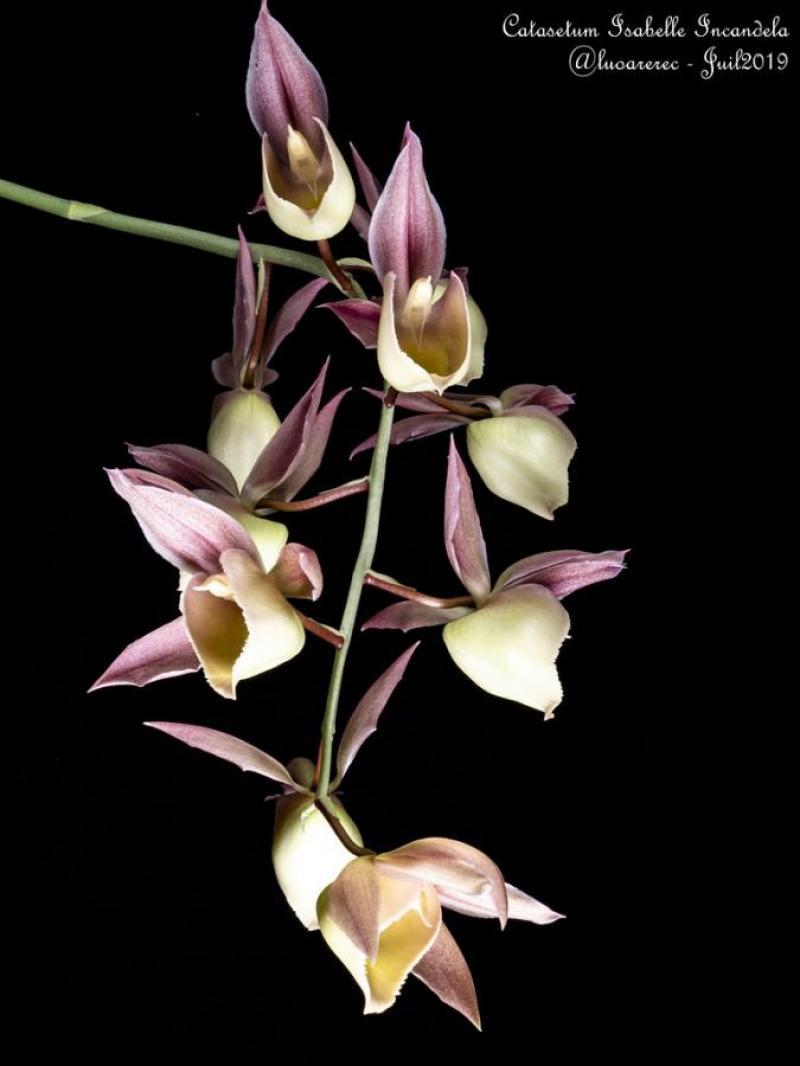Catasetum fuchsii
Also known as: Fuchs Catasetum in the subfamily: Epidendroideae
Native to: Brazil
General Information
Fuchs Catasetum is a warm to hot growing epiphytic orchid belonging to the sub family Epidendroideae native to Brazil. It is named after the American Orchid Collector and Vendor late 20th century.
Plant Description
Each new growth has numerous arching lance shaped leaves that grow to 5-40cm long. Pseudobulbs grow to 4-18cm
Flowers
Numerous fragrant blossoms appear
Fragrance
The orchid is fragrant.
Substrate(s)
- Coarse
- Bark
- Charcoal
- Treefern
- Spaghnum Moss
- Perlite
Care Notes
These orchids like to be kept on the dry side, but may need to be watered daily during warm weather, and prefer a well draining mix or also do well mounted, provided they can be watered regularly.
These are quite a forgiving orchid, there are no special requirements to get this orchid to flower, just good care and consistent conditions. Larger plants may be more fussy and can react poorly to change; a poorly timed repotting, a pest infection or an unusually hot day can set them back for a couple of years. However, even plants that have been treated poorly can thrive, and if they are set back they often recover much stronger then they would otherwise be.
Fragrant:- IsFragrant
Climate
Grows at low elevations. Rainfall ranges from 20mm to 150mm per day, heaviest in July and lightest in February. Humidity ranges from 63% to 78%, highest in August and lowest in March. Temperature ranges from 15C to 32C, highest in June (22C to 32C) and lowest in January (15C to 24C).
Fertiliser
These plants thrive on fertiliser, especially during periods of growth. Liquid fertiliser can be applied year round at the recommended strength, augmented with manure pellets or other quickly degradable fertiliser, applied away from the base of the plant, during periods of strong growth. Slow release pellets can also be applied year round at the rate of 2-3 pellets per cup (250ml) of media.
They can benefit from a high phosphate fertiliser leading up to flowering season, and by a high nitrogen fertiliser when new growth appears.
Use balanced fertiliser year round. This plant is a heavy feeder year round, full strength fertiliser can be used. Fertiliser can be applied heavily year round. Use a high Nitrogen fertiliser during Spring and Summer. Use a high Phosphorous fertiliser during Summer.Potting
These plants are quite forgiving and will do well repotted ever 2-3 years. The mix should be coarse, well draining, and allow space for air to move and for roots to grow.
Alternatively, these plants will also do well mounted to tree fern or cork slabs, or mounted to trees.
Best time for repotting or mounting the orchids is the end of winter when new growths start to appear. Avoid repotting during hot weather,
Use water retentive media such as moss to prevent roots from drying out quickly This plant does very well in baskets or suspended pots Repotting is best done annually.
















